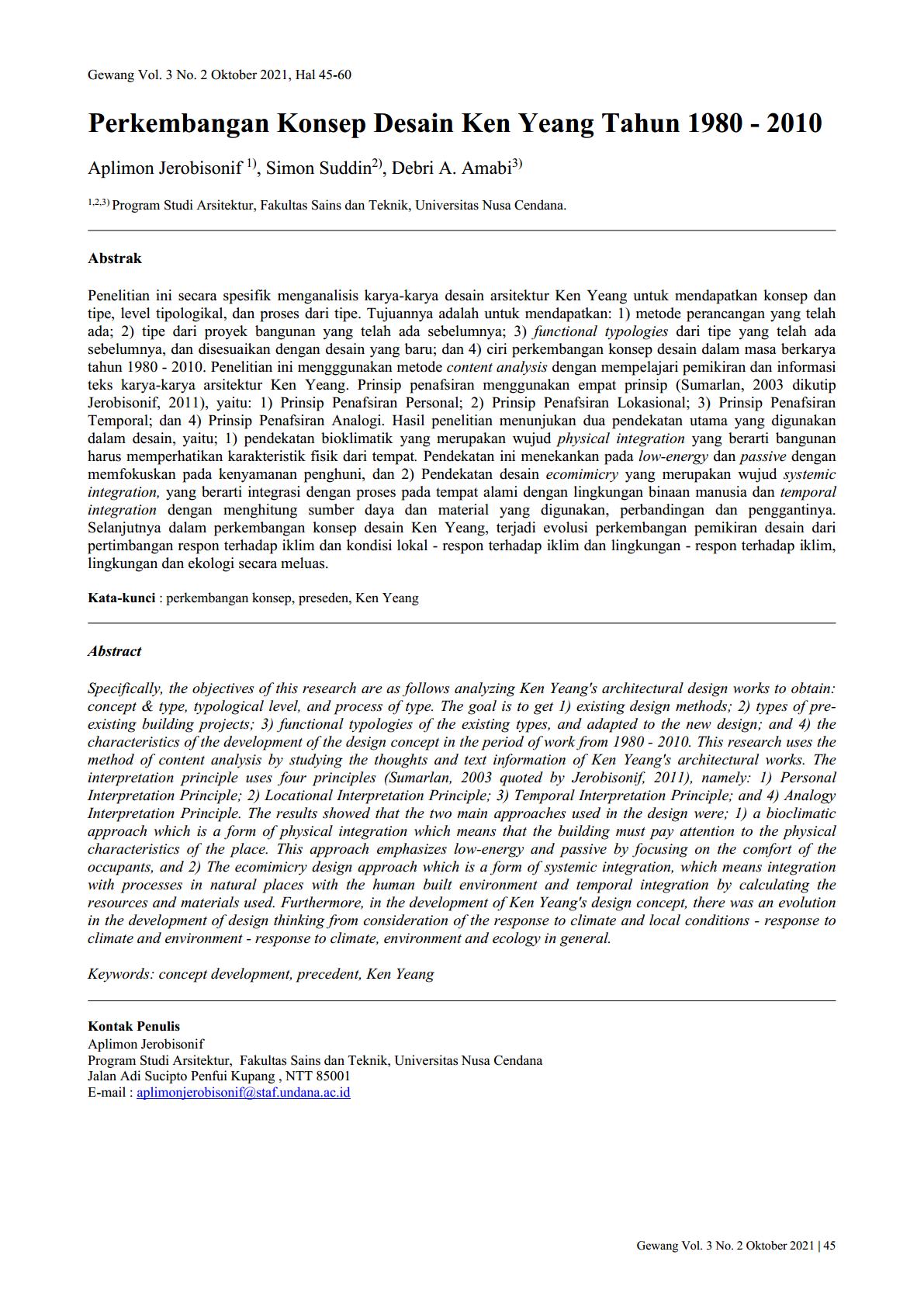Perkembangan Konsep Desain Ken Yeang Tahun 1980 - 2010
Main Article Content
Abstract
Specifically, the objectives of this research are as follows analyzing Ken Yeang's architectural design works to obtain: concept & type, typological level, and process of type. The goal is to get 1) existing design methods; 2) types of pre-existing building projects; 3) functional typologies of the existing types, and adapted to the new design; and 4) the characteristics of the development of the design concept in the period of work from 1980 - 2010. This research uses the method of content analysis by studying the thoughts and text information of Ken Yeang's architectural works. The interpretation principle uses four principles (Sumarlan, 2003 quoted by Jerobisonif, 2011), namely: 1) Personal Interpretation Principle; 2) Locational Interpretation Principle; 3) Temporal Interpretation Principle; and 4) Analogy Interpretation Principle. The results showed that the two main approaches used in the design were; 1) a bioclimatic approach which is a form of physical integration which means that the building must pay attention to the physical characteristics of the place. This approach emphasizes low-energy and passive by focusing on the comfort of the occupants, and 2) The ecomimicry design approach which is a form of systemic integration, which means integration with processes in natural places with the human built environment and temporal integration by calculating the resources and materials used. Furthermore, in the development of Ken Yeang's design concept, there was an evolution in the development of design thinking from consideration of the response to climate and local conditions - response to climate and environment - response to climate, environment and ecology in general.
Downloads
Article Details
This license enables reusers to distribute, remix, adapt, and build upon the material in any medium or format, so long as attribution is given to the creator. The license allows for commercial use

